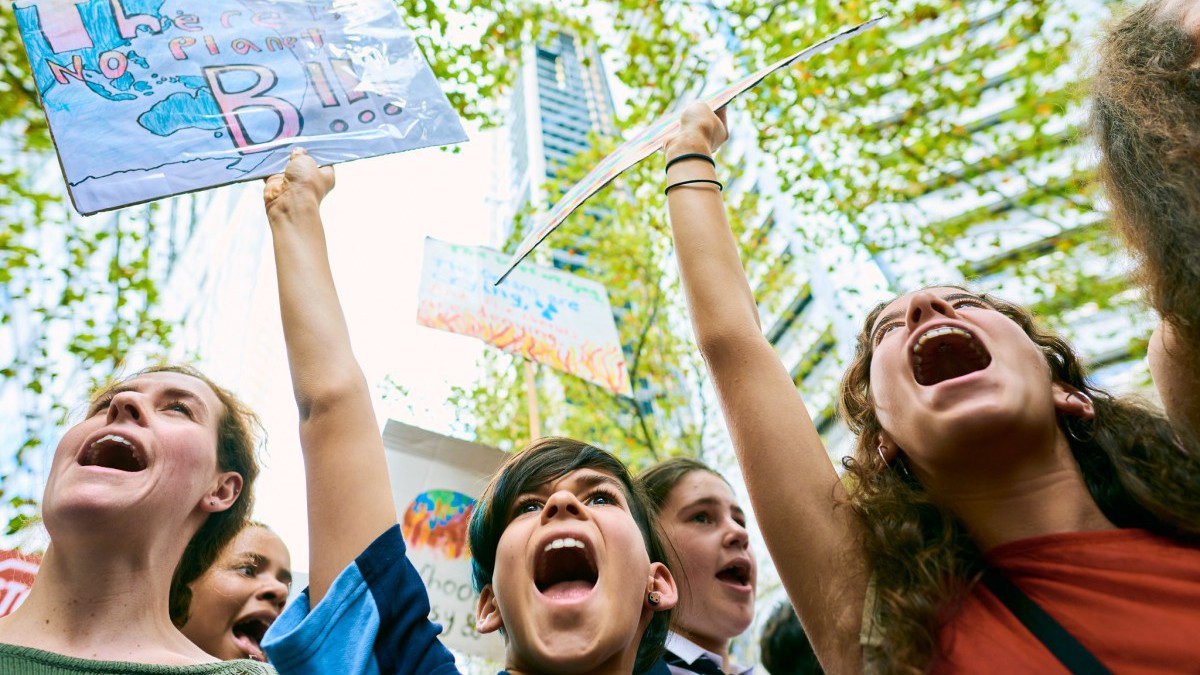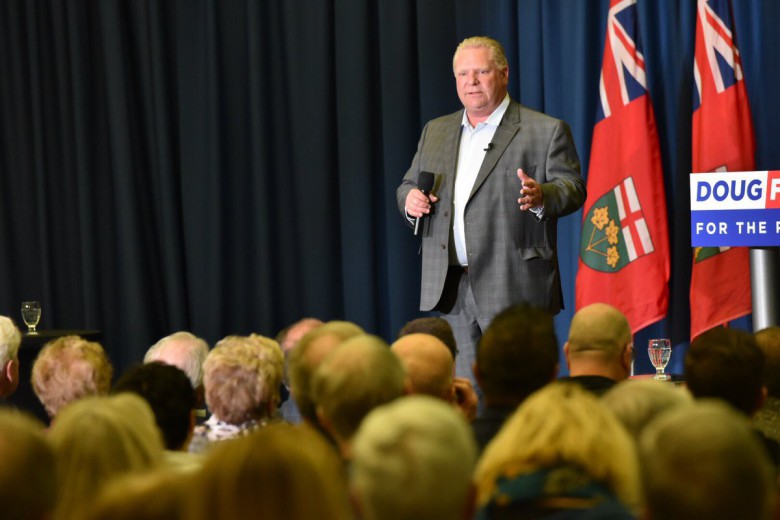On September 27, student climate activists in Canada are calling on all concerned citizens to join them in the Global Climate Strike. Everyone – across industries – is being asked to stop work, take to the streets, and bring industry to a halt in order to demand urgent, transformative action on climate change.
The strange thing about the call for a general climate strike – a call that’s centred around a tactic that came directly out of the labour movement – is the noticeable lack of involvement by unions. For example, a letter calling for a September 20 general strike, published in the Guardian by Naomi Klein, Bill McKibben, and others, didn’t mention unions once. Out of 50 North American partners listed on the Global Climate Strike website, there’s not a single union represented, and only one labour organization – the U.S.-based Labor Network for Sustainability.
Labour’s internal divisions over ”just transition” strategies keep it largely disconnected from the broader climate movement in Canada. Notably, the Alberta Federation of Labour’s approach to climate justice involved doubling down on the Alberta NDP’s strategy to build the Trans Mountain pipeline expansion that would, allegedly, help fund a transition away from fossil fuels. Meanwhile, in 2016, the B.C. Government and Service Employees’ Union (BCGEU) signed the First Nations Solidarity Accord opposing all pipelines through Indigenous territory, with the Canadian wing of the Laborers’ International Union of North America (LIUNA) signing a similar pact in 2017. Many other labour organizations in Canada, however, have remained silent on the Trans Mountain expansion, including the Canadian Labour Congress, despite supporting other just transition initiatives like the coal phaseout. This puts much of labour at odds with most of the climate justice and Indigenous sovereignty movements, where opposition to the Trans Mountain expansion is front and centre.
The strange thing about the call for a general climate strike – a call that’s centred around a tactic that came directly out of the labour movement – is the noticeable lack of involvement by unions.
Labour’s hesitation to participate in climate strikes stems not only from climate policy disputes, but the fact that Canadian strike rates have been declining since the 1970s. Canada also has extremely restrictive strike laws, outlawing political and solidarity strikes. And when workers do go on strike, employers and governments are always quick to find ways to shut them down – like Trudeau legislating striking postal workers back to work last year. The ruling class knows the strike is the working class’s most powerful weapon, and has gone to great lengths to deter its use.
With much of the labour movement unable or unwilling to defy such restrictive legislation and walk off the job illegally, many young climate activists are instead learning organizing tactics from groups like Extinction Rebellion or Indigenous-led blockades – and rightfully so.
But effective labour strikes have the unique quality of shutting down industry and government at the point of production. A street protest might temporarily delay workers, and activist occupations might slow production, but workers themselves choosing to walk off their jobs puts an immediate chokehold on profit generation in the private sector and social reproduction in the public sector. Workers not showing up to work creates an immediate crisis for capital.
Despite formidable obstacles, illegal and general strikes continue to happen across the world. In 2018 and 2019, teachers across the United States have taken massive, illegal strikes, winning historic gains for public education in West Virginia, Arizona, and Los Angeles. Puerto Rico’s recent general strike, also led by teachers, saw the resignation of governor Ricardo Rosselló.
If Canada’s climate movement aims to force industry’s hand and provoke an immediate pivot to renewable energy, work stoppage can’t just be one tactic in the strategy – it must become central to the movement.
The ruling class knows the strike is the working class’s most powerful weapon, and has gone to great lengths to deter its use.
U.S.-based union organizer Jane McAlevey has spent the past several years arguing for the labour movement to use strikes as a means to create systemic social change. For McAlevey, the key to building a high participation strike with the power to win involves “structure tests.” A “structure” is any place where the same group of people meet every day, and the “tests” are a series of escalating actions – like signing petitions, or wearing the same colour for a day – used to gauge how many people in the structure are willing to participate in increasingly risky actions. Organizers know workers are ready to strike and win when their structure tests show that a majority, and then a supermajority, of people in the workplace participate in these actions.
Climate strikers are in a unique position to use their schools as a structure within which to run tests and practise labour organizing tactics – and, often without knowing, they’ve already begun to do just that. Many student climate organizers begin by asking their peers to do a low-stakes classroom structure test like wearing a pin or sharing a photo on Instagram. That’s helped students identify barriers to participation and address their classmates’ fears, and eventually get other students out to meetings and protests.
Perfecting this method is tedious and challenging. There’s a reason McAlevey titled her most recent book No Shortcuts. But we have seen these strategies pay off massively in recent years – and we can’t ignore their power, nor the transformative experience they provide for workers who participate. A generation of young workers well versed in workplace organizing tactics by the time they graduate high school could be the catalyst labour needs to build up the capacity to take on massive, illegal strikes that can win.
Note: This article originally stated that the Global Climate Strike begins on September 20. While there are actions planned globally from September 20 to the 27, Canada’s Global Climate Strike is on September 27.



_780_520_90_s_c1.jpg)



